Removable, fixed, lingual orthodontic appliance and Invisalign overlays
The purpose of orthodontic appliances is to restore the correct positioning of the teeth in the jaw.Published: 18.01.2018
The purpose of orthodontic appliances is to restore the correct positioning of the teeth in the jaw. Treatment begins to align and properly position the teeth in the dental arches.
Braces can be divided into movable and fixed.
Removable orthodontic appliance
The removable device is not used 24 hours a day, the patient can take it out at any time. The effectiveness of the treatment depends largely on the regularity of wearing the brace and following the doctor’s recommendations.
It should be worn 12-14 hours a day. It is recommended for children who have milk or mixed teeth.
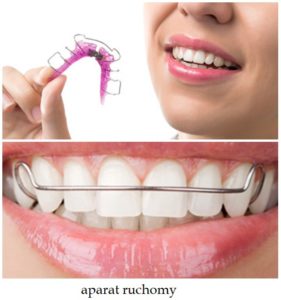
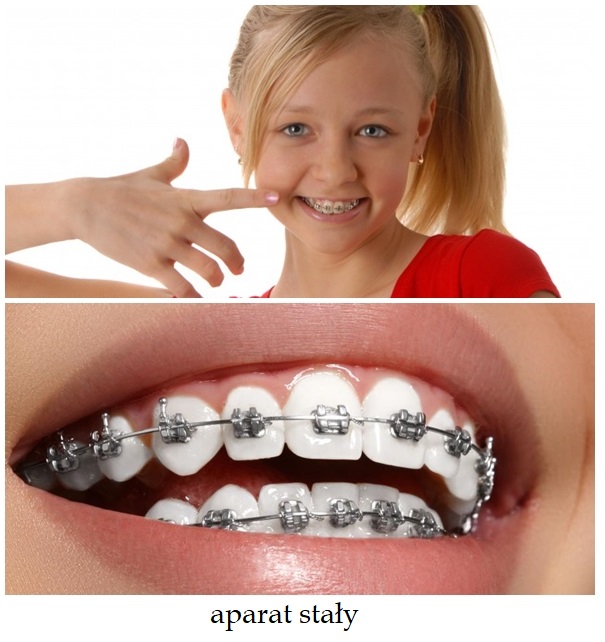
Fixed braces consist of arches and brackets attached to the teeth for the duration of treatment. Fixed braces cannot be removed freely, so oral hygiene is difficult.
What does a permanent brace consist of?
- Orthodontic brackets are attached to the teeth using dental glue, they connect all parts of the fixed orthodontic appliance.
- An orthodontic archwire is a nickel-titanium or steel wire that runs through the slots of the brackets and causes tooth movement. Different archwires are used at each stage of treatment because they provide different effects.
- orthodontic ligatures (so-called rubber bands) Their task is to support the arch of the brace in the slot of the bracket, protecting it against falling out or shifting. At the same time, they allow patients to have a bit of individuality and style their braces in their favorite color. Don’t worry, you can change the color of the ligatures to a different color at each visit.
Fixed braces are recommended for children and adults with permanent teeth.
There are different types of orthodontic braces available:
– metal zippers made of high-quality surgical stainless steel.
– aesthetic brackets (composite or ceramic, sapphire), which are almost transparent, making them less visible. Despite the visual differences, the locks perform the same function and have a similar structure. In the central part of the bracket there is a slot through which the orthodontic archwire runs – a key element of the brace that is responsible for its operation.
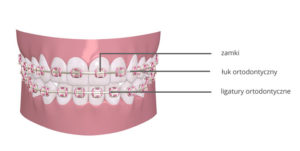
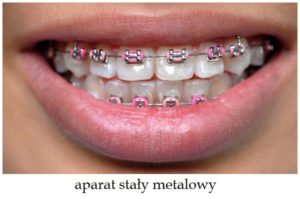
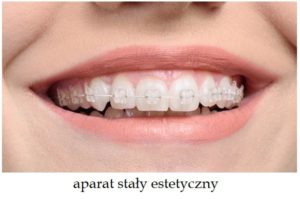
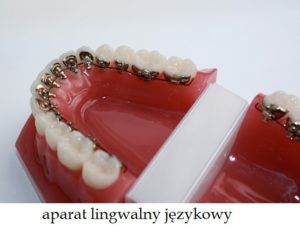
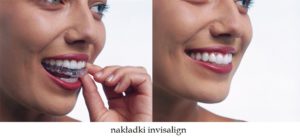
Lingual orthodontic appliances
They look like classic braces, but with an important exception – the brackets are glued to the inside of the teeth, so they are completely invisible from the outside. However, not everyone can be fitted with a standard lingual brace. Particular contraindications include periodontal disease, low teeth (insufficient height of the crown part of the tooth for the bracket to be attached), narrow arches, and poor hygiene. The period of getting used to lingual braces usually takes slightly longer than in the case of classic braces, because it may cause temporary problems with pronunciation and hygiene is also difficult.
Invisalign overlays
These are transparent overlays that tightly cover the teeth and are replaced every 2 weeks. They work well in the case of minor defects. They are comfortable and the forces exerted on the teeth are precisely planned. Invisalgin aligners move teeth in a slow and controlled manner.
The overlays are removed for meals and tooth brushing, making it easier to maintain oral hygiene than with fixed braces.
The duration of treatment depends on the needs of a given patient. It is usually comparable to the time required during treatment with fixed braces.